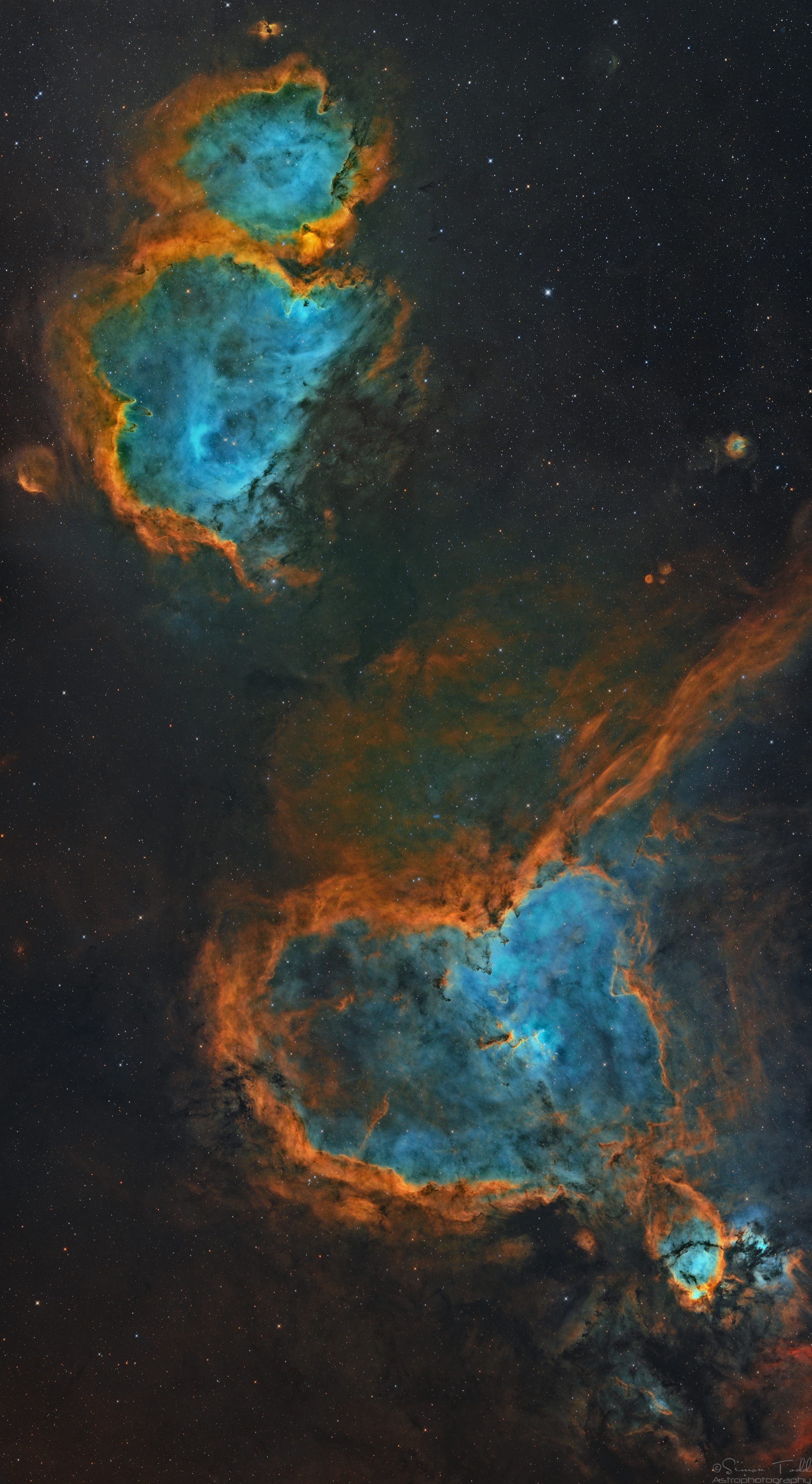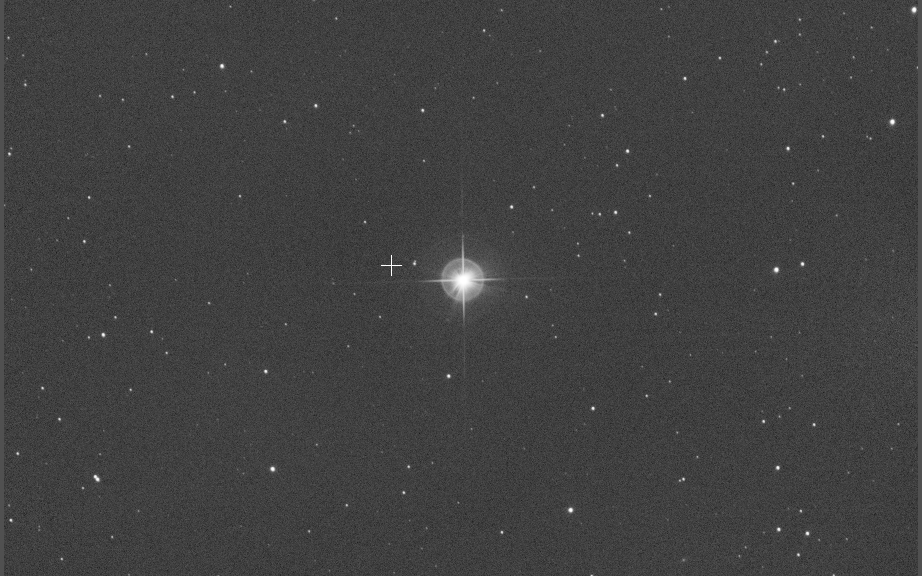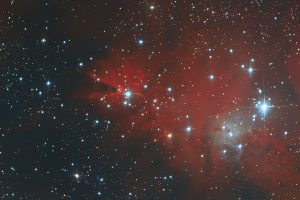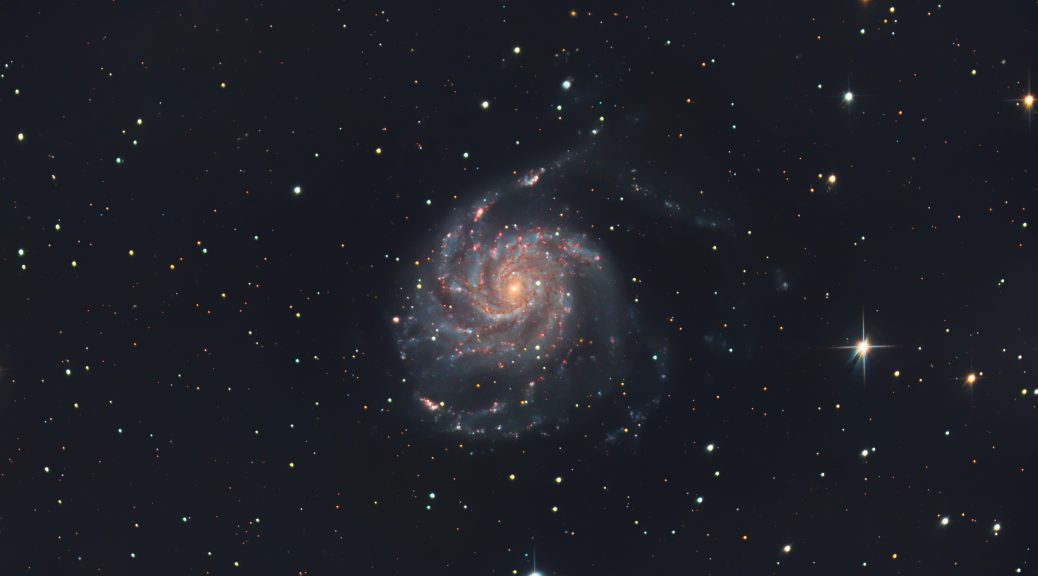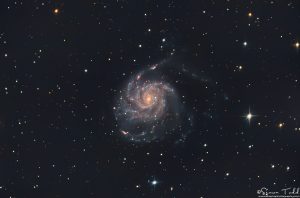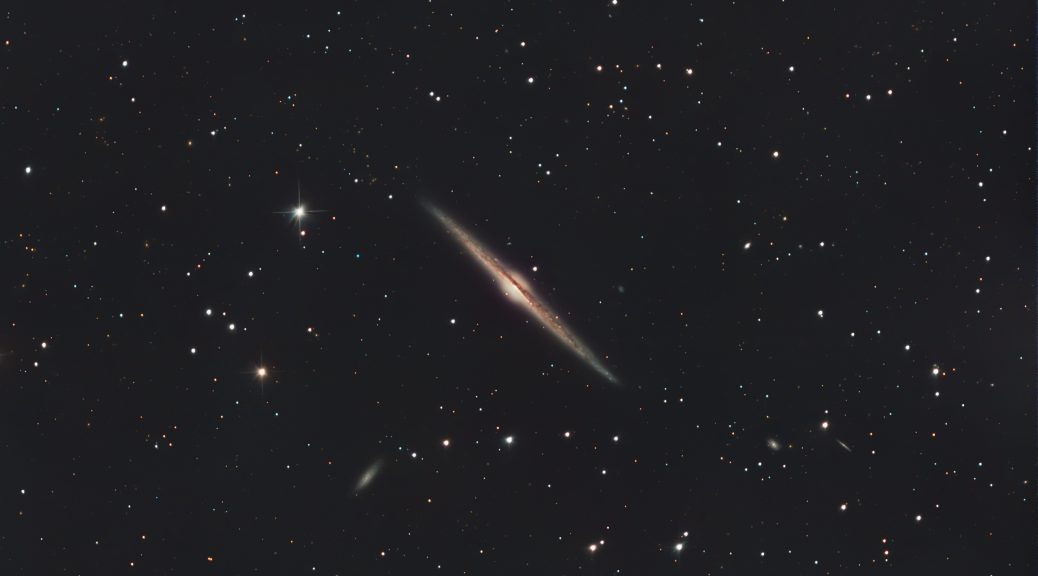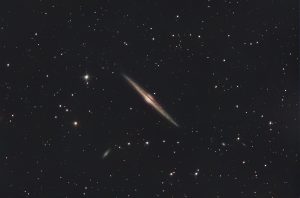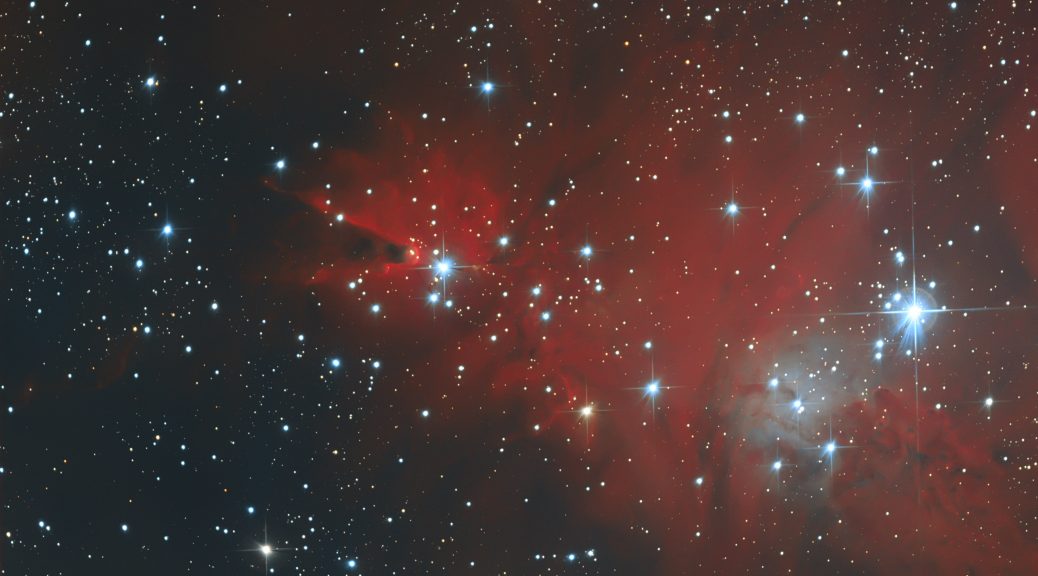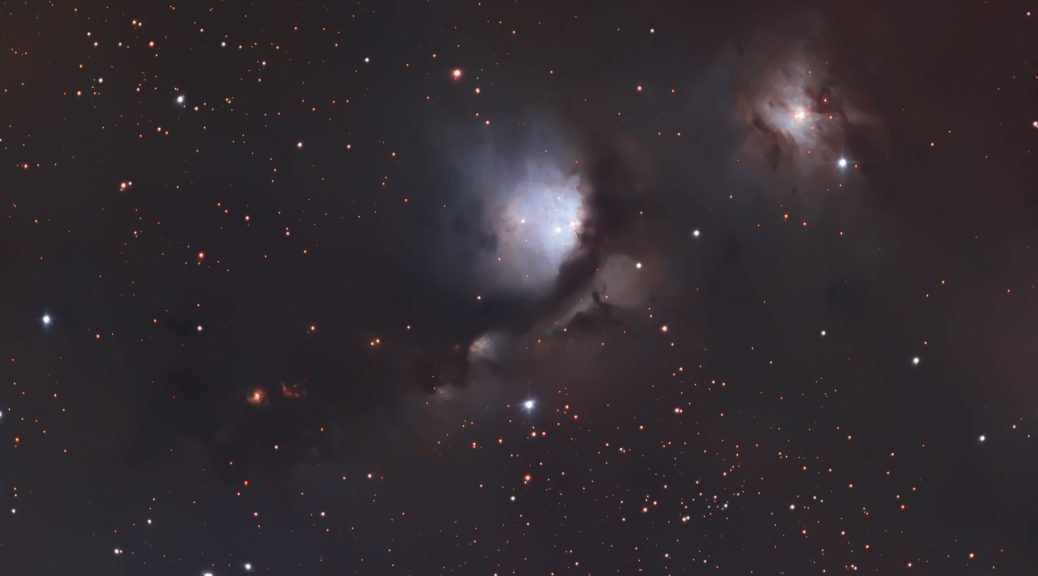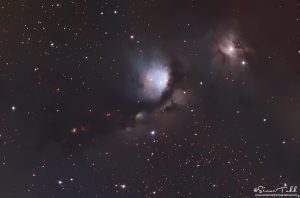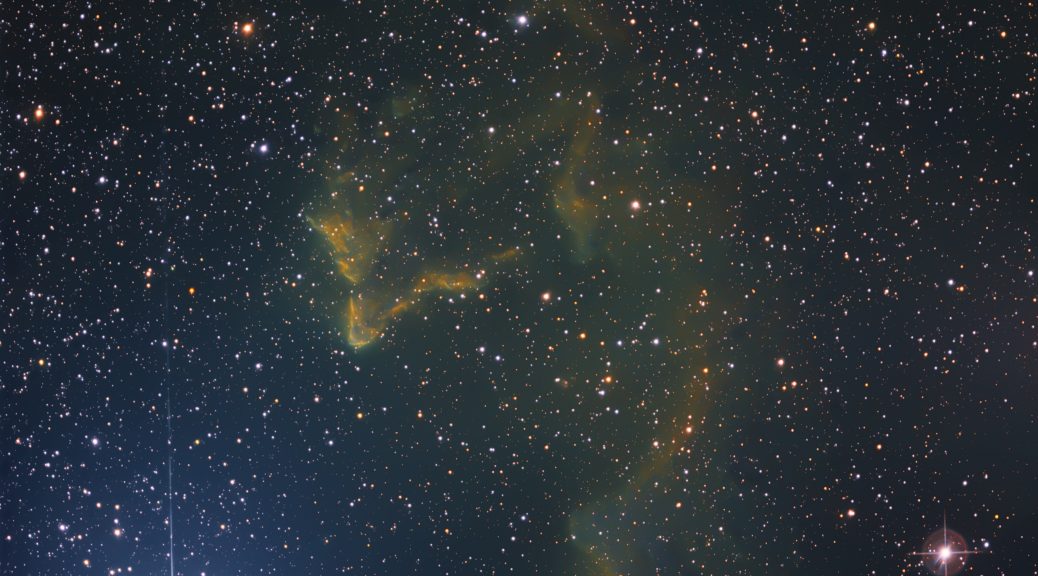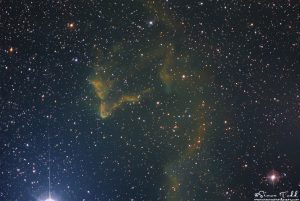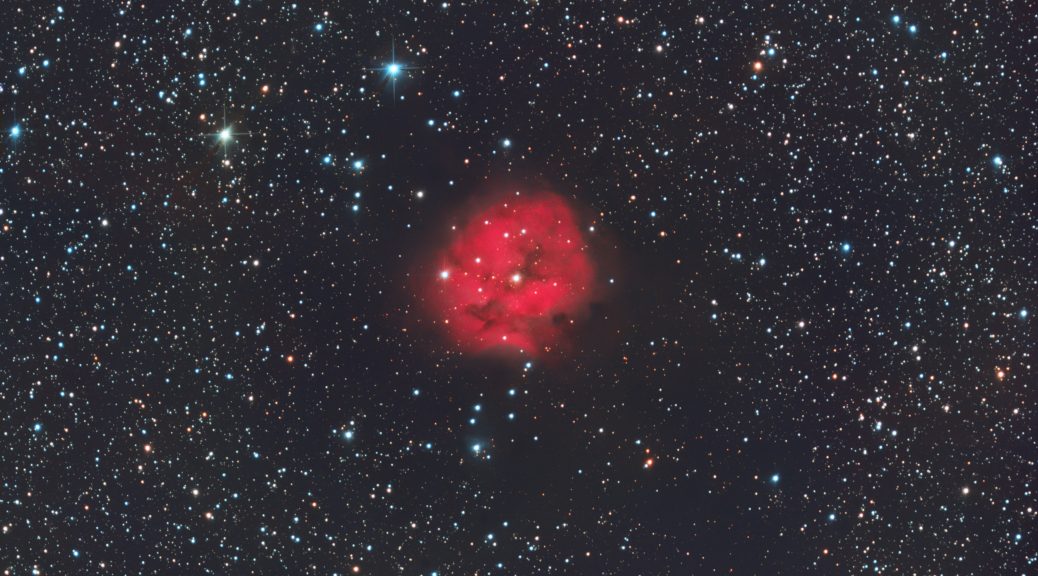In the boundless theatre of the night sky, a spectacle of cosmic proportions gently unfolds. Here, through the unblinking eye of my camera, we witness the Heart and Soul Nebulae, celestial bodies of unimaginable scale and beauty. Captured in the vivid hues of the Hubble Palette, this image is the culmination of over 68 hours of patient vigil over the course of six months, a testament to the relentless march of time and space.
The Heart Nebula, known as IC 1805, and its companion, the Soul Nebula, IC 1848, are more than mere clusters of gas and dust. They are incubators of stars, cosmic nurseries where new celestial lives begin. Nestled within is the charmingly named Fish Head Nebula, a smaller star-forming region within this grand cosmic landscape.
Each pixel of this mosaic is a story, a tiny fragment of the universe’s narrative, captured through the artful blend of sulfur, hydrogen, and oxygen emissions. As we gaze upon this image, we are not merely observers but voyagers, embarking on an odyssey across the galaxy. It invites us to ponder our place in this magnificent universe, a reminder of both our insignificance and our profound connection to the cosmos.
In the grand scheme of things, this image is but a fleeting glimpse into the eternal dance of the cosmos. It is a humble offering to the beauty and complexity of the universe, a universe that continues to captivate and inspire us with its endless mysteries.
Catalog Names:
IC 1805 (Heart Nebula)
IC 1848 (Soul Nebula)
Fish Head Nebula (Part of the Heart Nebula)
Acquisition Dates:
16 May 2023, 17 May 2023, 20 May 2023, 21 May 2023, 25 May 2023, 26 May 2023, 27 May 2023, 28 May 2023, 15 Jun 2023, 16 Jun 2023, 24 Jun 2023, 25 Jun 2023, 26 Jun 2023, 13 Jul 2023, 16 Jul 2023, 17 Jul 2023, 19 Jul 2023, 20 Jul 2023, 25 Jul 2023, 26 Jul 2023, 6 Aug 2023, 7 Aug 2023, 9 Aug 2023, 10 Aug 2023, 17 Aug 2023, 20 Aug 2023, 22 Aug 2023, 5 Sep 2023, 9 Sep 2023, 15 Sep 2023, 23 Sep 2023, 29 Sep 2023, 8 Oct 2023, 9 Oct 2023, 14 Oct 2023, 15 Oct 2023, 6 Nov 2023, 7 Nov 2023, 10 Nov 2023, 11 Nov 2023, 14 Nov 2023, 15 Nov 2023, 19 Nov 2023, 20 Nov 2023, 22 Nov 2023, 24 Nov 2023, 25 Nov 2023
Frames:
Chroma H-alpha 3nm Bandpass 50 mm: 213×300″(17h 45′) (gain: 100.00) -10°C bin 1×1
Chroma OIII 3nm Bandpass 50 mm: 303×300″(25h 15′) (gain: 100.00) -10°C bin 1×1
Chroma SII 3nm Bandpass 50 mm: 303×300″(25h 15′) (gain: 100.00) -10°C bin 1×1
To see the image in all its glory, use the link
Equipment:
Imaging Camera: ZWO Astronomy Cameras ASI6200MM Pro Gain 100 -10C
Imaging Scope: Sharpstar Optics 20032PNT F3.2 Paraboloid Astrograph
Filters: Chroma 50mm 3nm Filters
Filterwheel: ZWO Astronomy Cameras 7x EFW
Guide Camera: ZWO Astronomy Cameras ASI290MM
Mount: Sky-Watcher EQ8 Pro German Equatorial Mount
Auto Focuser: Primalucelab Sesto Senso2
Environmental conditions: Primalucelab ECCO2
Observatory Control: Primalucelab Eagle Eagle 4 Pro
Roof Control: Talon RoR
Image Acquisition: Main Sequence Software Sequence Generator Pro
Image Calibration and Stacking: Astro Pixel Processor
Image Processing: PixInsight, EZ Processing Suite, Russ Croman’s BlurXterminator and StarExterminator
